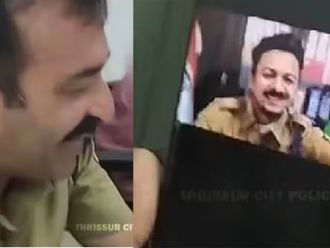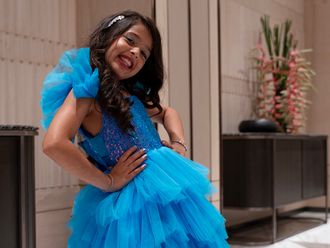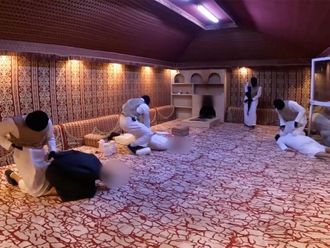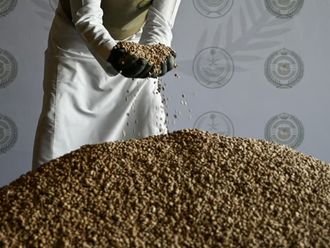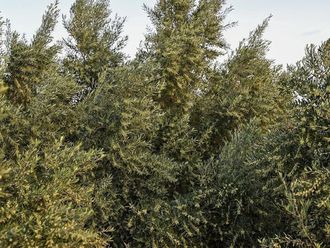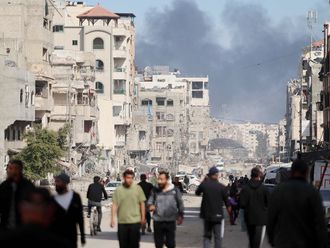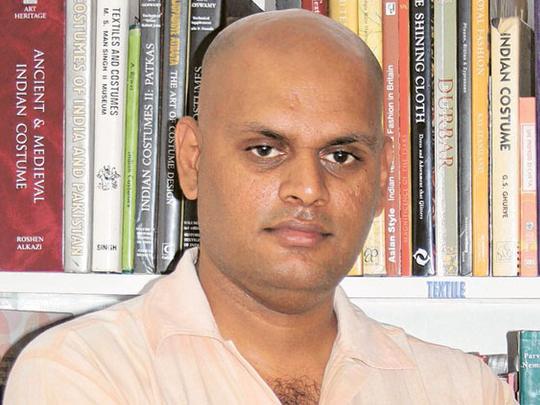
New Delhi: Pramod Kumar, founder and managing director of Eka (meaning one), is a busy man shuttling between India and Saudi Arabia and doing what he loves the most — being surrounded by art.
Launched in 2009, Eka is the only museum management company in India. Comprising a team of eight professionals, it is currently working on projects in Riyadh, Rajasthan, Kolkata, Chennai and Punjab.
Interestingly, Kumar has no formal training in museology or the fine arts. But he has vast experience in managing arts-related fields and museums, which gave him exposure to the art and culture of many countries. Excerpts from an exclusive interview with Kumar.
GULF NEWS: How did this very unconventional idea of starting a museum consultancy company strike you?
PRAMOD KUMAR: We found there were an increasing number of requirements among museums and private collectors who needed artefacts and valuables documented and archived. And this newfound interest wasn't only for greater research, but also to look into areas of creating new galleries and exhibition spaces.
After the launch, which was your first project?
The first major project was archiving the photography collection of the City Palace Museum in Udaipur. Here, we catalogued about 27,000 photographs, followed by opening a gallery of historical pictures found in any palace museum. The former king of Udaipur, Arvind Singh Mewar, assigned us this project.
What form of art is your speciality?
It is mainly in textiles and photography, but as a company we deal with all kinds of artefacts
Do you deal only with private collections or also government-run museums and archives?
Most are private museums run by trusts, many of them palace museums of former royal families. Also, there are some individual collectors. We do deal with government agencies, but those are few.
How long does it take to finish a project?
It varies, depending on the size of the collection. For instance, in Udaipur, we've been on the job since 2009. We finished the photography section and are now dealing with paintings. The museum also has one of the world's finest crystal furniture collections. There could be about 6,000 pieces. That apart, there's a huge arms and ammunition collection and beautiful sculptures.
Are your clients art connoisseurs or in the business of art for money and fame?
Most are in the business of buying and collecting art. People who do it for commercial reasons may or may not even get it catalogued, because they don't necessarily understand what it is for.
Is your work restricted to building a museum or also creating digital archives and putting the collection online?
Our entire cataloguing is digitised so that all information can be available online for scholars and researchers. But clients have not yet allowed us to put them online.
Will anybody other than research scholars benefit from putting the archives online?
It's important to know that a lot of pieces in one collection match or connect with other collections in and out of the country. So, for scholars, unless they see a larger body of work, the story is only half told. To date, most of the technical work done in Indian art has been based on Indian collections in western museums. For the full story, people have to see the collection which is still in India.
Do you have any major projects in West Asia?
We are working in Riyadh in Saudi Arabia on a very significant collection of costumes and textiles from various tribes. After the cataloguing, exhibitions will be mounted all over the world and literature published. People are missing out on the important fabrics and civilisation of that region. Saudi Arabia has been a huge centre of trade and commerce because of Haj. A lot of interesting influences have come to the country.
These costumes and textiles have valuable aspects to them. They exhibit a lot of variety — block printing from Gujarat, woven textiles from Syria, silk from China and glass beads and embroidery from Africa. Saudi Arabia is a melting pot of so many different and interesting cultures and these textiles relate the story. We began this project last year and it will take us at least a couple of years to catalogue thousands of varieties of textiles.
Has there been any change in awareness regarding this field since you began?
Yes, museums and collectors have begun to realise the importance of cataloguing their collections. It's not simply for research, but even if something is stolen from the collection, one has the proof to back up that claim. This will make it difficult to sell the stolen products in the international market, thus preventing such thefts.
Profile: Surprise twists
- Pramod Kumar was born in Mau near Indore on November 28, 1973, to mother Ambika and father Brigadier K.G. Nair.
- He graduated in economics and did post-graduation in business management from Mumbai University.
- Worked with a textiles buying agency in Mumbai for three years.
- Joined Rajeev Sethi, scenographer and designer, and headed a research project for Smithsonian Museum, in Washington.
- Organised the Jaipur Literary Festival.
- Worked with Ebrahim Al Kazi to bring his entire collection of photographs to India. It is considered India's largest archive of 19th and early 20th century photographs — 2005-09.
- Launched Eka in 2009.


